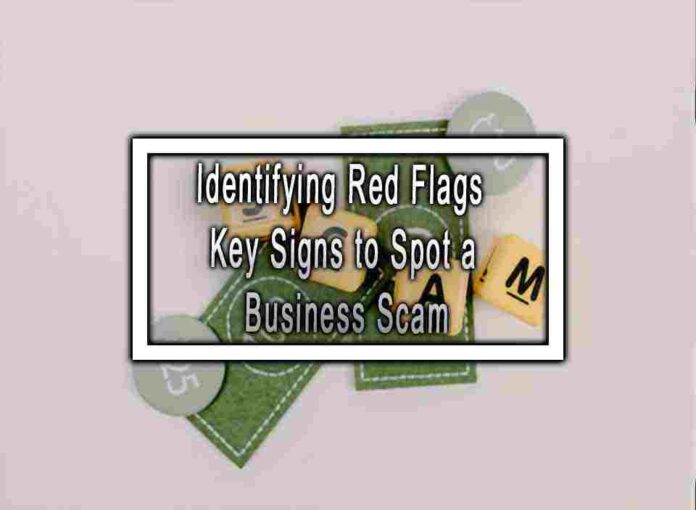Identifying red flags and key signs can help you spot a potential business scam and protect yourself from fraudulent activities. Here are some important indicators to watch out for:
1. Unrealistic Promises
Be cautious of business opportunities or offers that promise exceptionally high returns or profits with minimal effort or risk. If something sounds too good to be true, it often is.
2. Pressure Tactics
Scammers often use high-pressure tactics to rush you into making a quick decision without giving you sufficient time to research or think it through. Be wary of anyone trying to create a sense of urgency or using aggressive sales tactics.
3. Lack of Transparency
Legitimate businesses are transparent about their operations, products, and services. If a company or individual avoids providing clear and detailed information about their business model, financials, or contact details, it could be a red flag.

4. Requests for Upfront Payments
Exercise caution when asked to make upfront payments or investments before receiving any goods or services. Legitimate businesses typically have clear payment terms and processes.
5. Poor Online Presence
A legitimate business will usually have an established online presence, including a professional website, social media profiles, and customer reviews. Be skeptical of businesses with minimal or no online presence, as it may indicate a lack of legitimacy.
6. Unprofessional Communications
Pay attention to the quality of communication from the business. Poor grammar, misspellings, unprofessional email addresses, or inconsistent branding could be signs of a scam.
7. Unsolicited Contact
Be cautious if you receive unsolicited phone calls, emails, or messages offering business opportunities or investments. Legitimate businesses typically do not approach potential customers or investors without prior contact or consent.
8. Lack of Credentials or Licenses
Research the credentials, licenses, or certifications that a business should have in their industry. Scammers often operate without proper credentials or licenses, and they may use fake or misleading information.
9. Negative Reviews and Complaints
Search for reviews and complaints about the business or individual online. Pay attention to consistent negative feedback, reports of scams, or unresolved customer issues. This can provide valuable insights into their reputation.
10. Absence of Legal Documentation
Legitimate businesses have proper legal documentation, such as contracts, terms of service, and privacy policies. If a business fails to provide or fulfill these legal requirements, it could be a warning sign.
11. Lack of Physical Address or Office
Scammers often avoid providing a physical address or operate from virtual offices or P.O. boxes. Verify the legitimacy of a business by checking if they have a physical presence or office that can be independently verified.
If you encounter any of these red flags or suspect fraudulent activity, it is essential to trust your instincts and exercise caution. Research the business thoroughly, seek advice from trusted sources, and consider reporting any suspicious activity to relevant authorities or consumer protection agencies.










